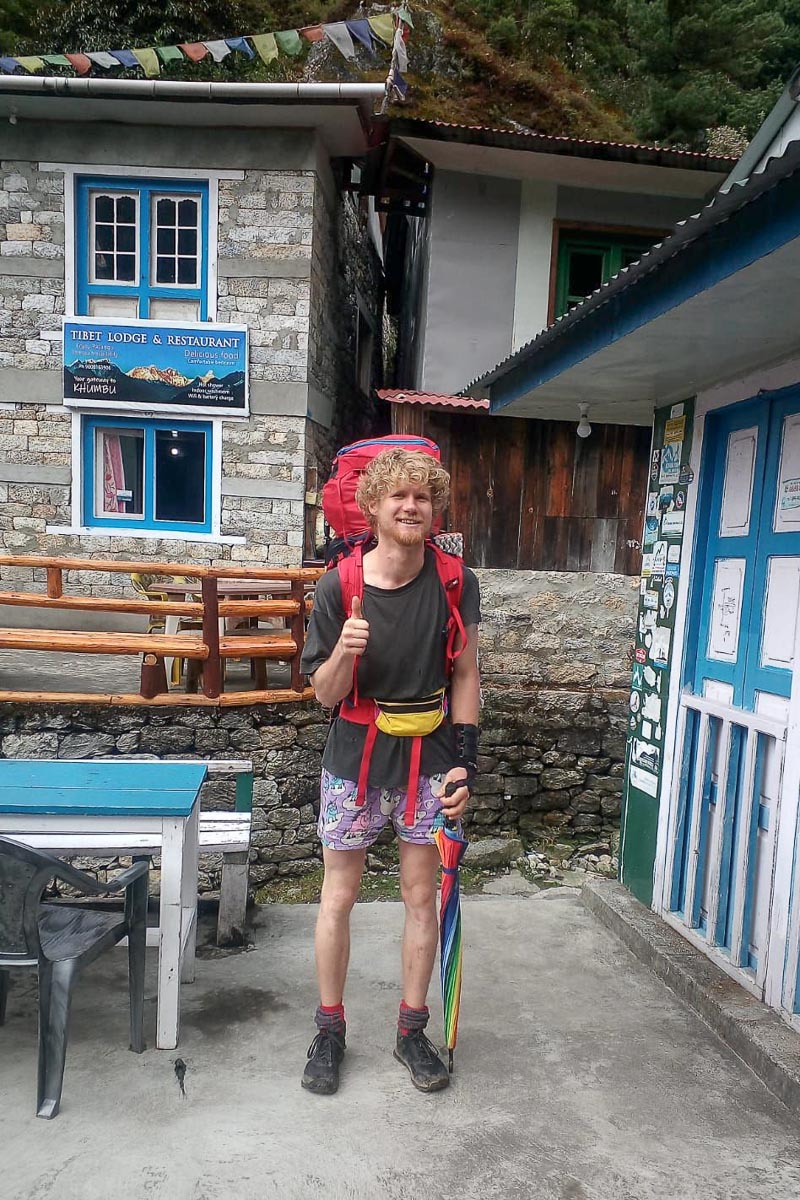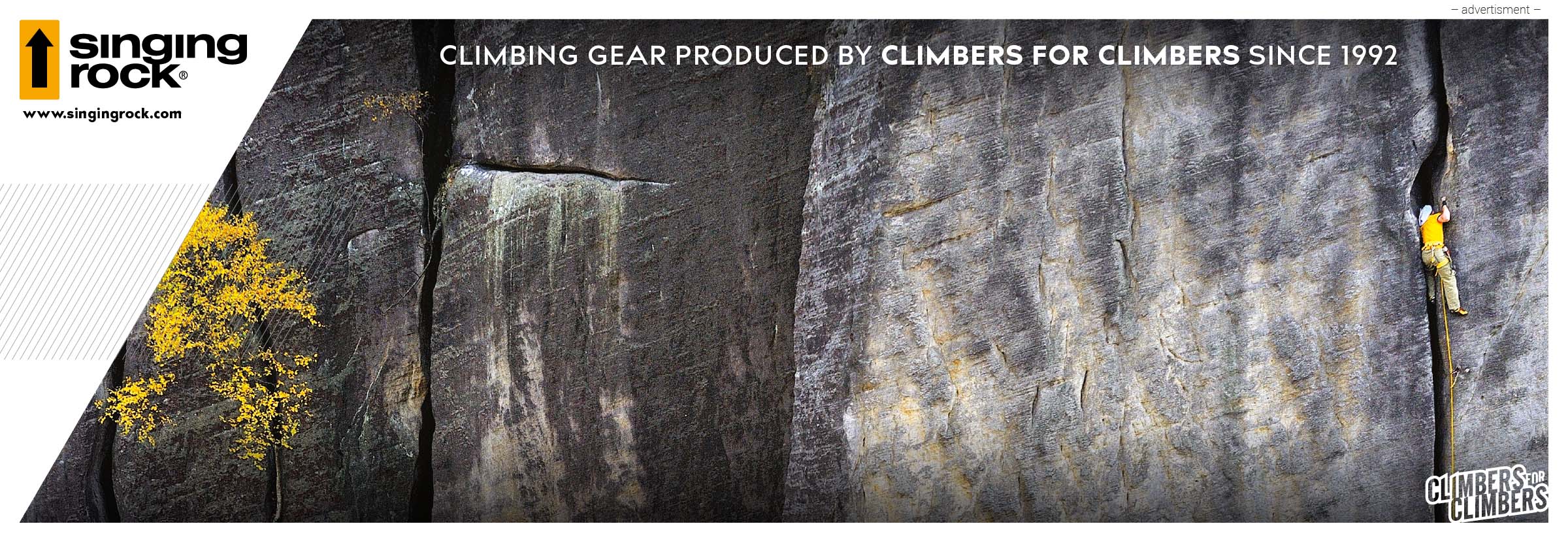Quickdraws
The Haphazard Himalaya Adventure that Resulted in a New Variant on Ama Dablam
03. 12. 2021, Standa Mitáč
Kuba ‘Ratlík’ Kácha set off for the Himalayas with no plan. He wanted to be surprised so he had no set goal in mind and decided to improvise. He met Hook (Czech alpinist and guide Zdeněk Hák, ed. notice.) at Prague International Airport, but at that point neither of them had considered that they would climb the west face of Ana Dablam (6,812m). They met again on Lobuche (6119m) after Hook’s partner had packed it in and gone home, so Hook proposed they climb Ama Dablam together.
Ratlík took the offer and after two nights on the wall on the 12th of November they completed a new variant on the west face by connecting two existing routes. For the bottom half the climbed the ‘American Direct’ route from 1990 and for the top half they followed Míra Šmíd’s 1986 solo-route. (Míra Šmíd was one of the best Czech alpinists back then, ed. notice) The lads say that grade-wise it was about UIAA 4, M4, WI 4, 1500M, alpine TD+/ED-. What did Kuba ‘Ratlík’ Kácha think of his spontaneous adventure? Read the short chat we had with him while he was still in the Khumbu region.
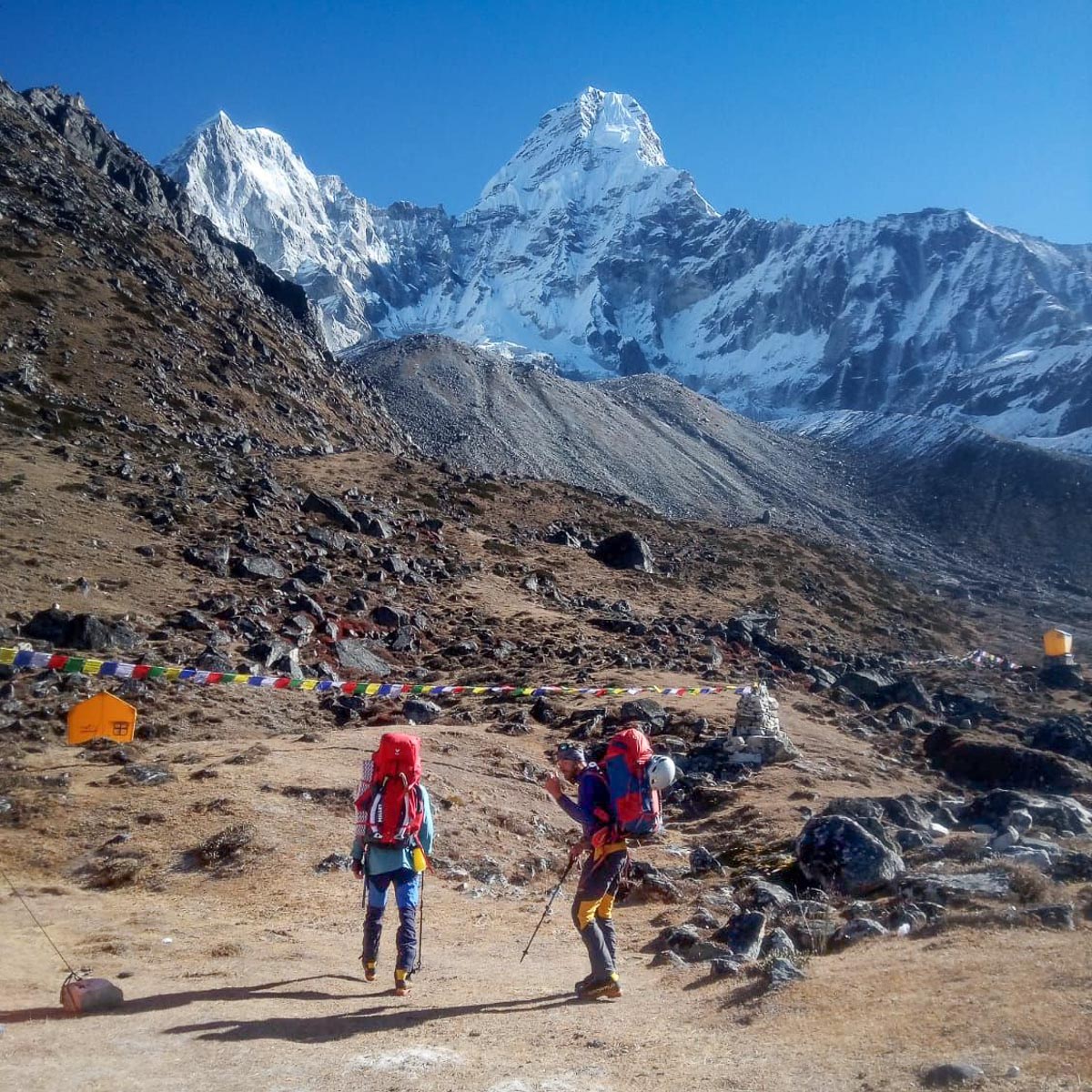
Centre-top looms Ama Dablam – ‘The Mother with
the Pearl Necklace’ (photo: archive JK)
How did it go?
Everything went rather smoothly. Well, everything except getting a permit. We thought that once you paid for it, you could climb whatever you wanted. We did the ‘Normal Route’ first. I climbed alone and Hook climbed with a client. It then became apparent that we needed to pay again if we wanted to climb again. We paid $3400 for a liaison officer and his insurance, and he didn’t even show up in the end. We also paid for a local guide, who also didn’t go with us, and his insurance as well, which was another $1000. Then it was $400 for the permit and everyone payed $400 tax… initially, we didn’t want to pay, but in the end, we caved in and coughed up. Hook’s sponsors and a couple of patrons helped us out.
What about conditions?
Before we got here, we got a good half-a-meter of snow. The north face was just powder, absolutely desperate, but conditions on the east face were brilliant. For us on the ridge, the left side was rubbish, but the right side had firn on it.
Did you actually know what you were preparing to climb?
(Laughing) One option was to do a more direct version of the south ridge after the French, but we didn’t fancy the walk over there. That gave us three options on the west face: one was to do Míra Šmíd’s route, but the seracs that he wrote about made this seem dangerous. Part of a serac had fallen off on one expedition. But Míra Šmíd was on it solo and not all-that long, which we determined lowered the objective danger. We then considered ‘Free Tibet’, the Spanish route to the left, but that one goes under an even nastier serac. It did, however, seem to be the easiest with nice snow fields. Ultimately, Hook came up with the idea of doing the central pillar and then linking onto Šmíd’s route. It appeared to be the safest and it also looked like it had the most proper climbing. Even when we made our approach though, we hadn’t realised that it had already been done. It didn’t bother us much though, we just headed straight up.
How did you figure out what you were climbing in the end?
We got a heads-up from the French, who had taken over the database of logged ascents from a woman who had been mapping it out here (Elizabeth Hawley). In the end we realised we had done a variant, because the Americans had gone to the right above the serac and linked up with the normal route, while we continued straight up Šmíd’s line. The first ascensionist Chris Warner confirmed this when he congratulated us via the internet. Apparently, he’d been on the route for four days and got frostbite on nine of his fingers.
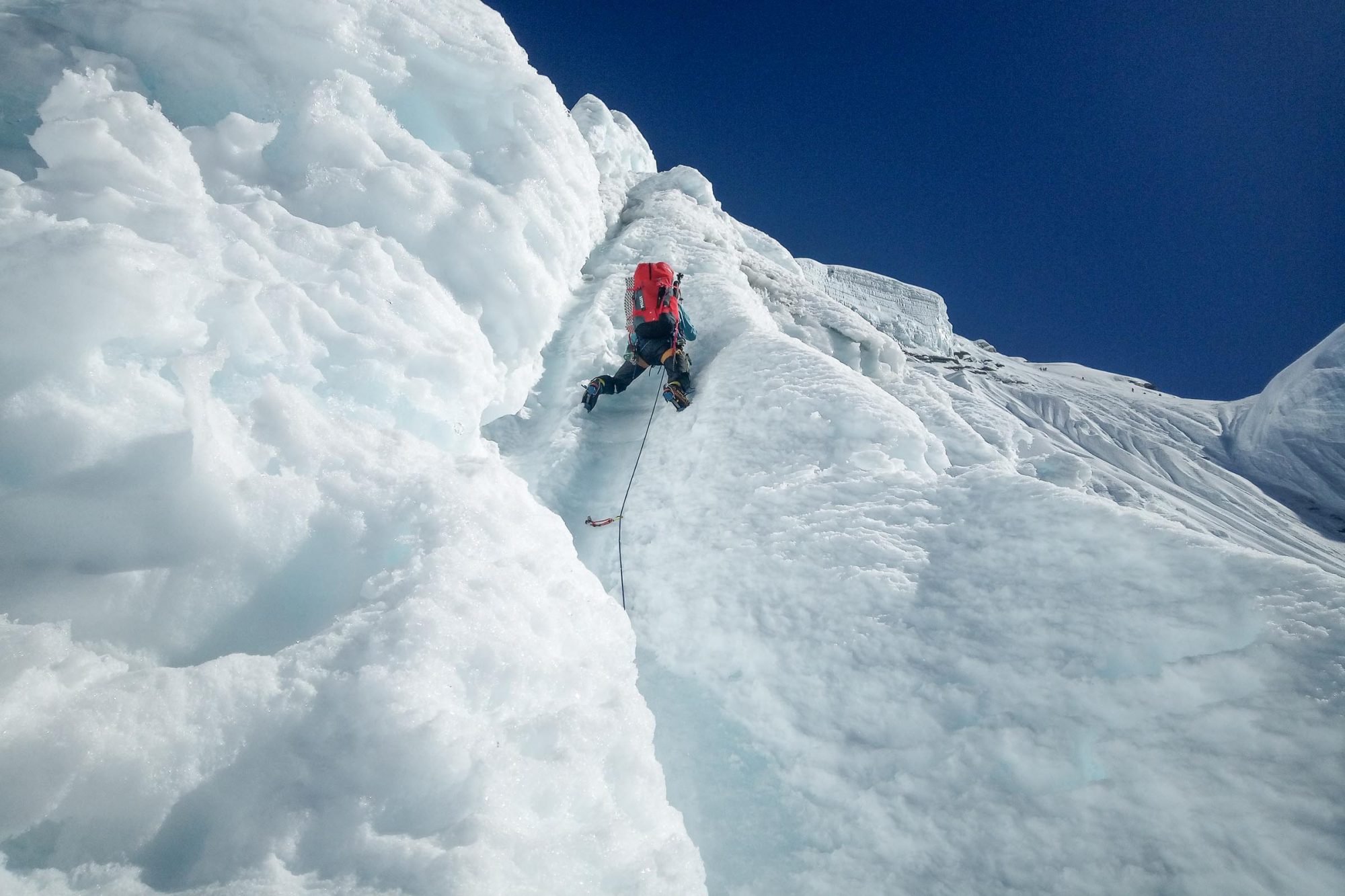
Did you do it Alpine style with no support from base camp?
No, base-camp support is standard here. They fed me there for two weeks, and it was just like my mum’s cooking. We slept like we did at primary school, and we had breakfasts, lunches, dinners… (laughing). It’s quite a big camp and each party has its own ‘tent city’. Everyone’s got their own cook, canteen, party tent with Christmas tree… We were here on ‘Tráva’s’ behalf (Honza Trávníček, ed. notice) with Utmost Adventures. Base Camp was already paid for from our first permit.
Can you give us the blow-by-blow?
We set off from Base Camp in the morning and pitched our tent under the wall. The next morning, we set off early and headed up the wall, which we completed after two bivis.
What were you carrying?
Just like Šmíd, about 15 kilos including half-a-litre of stove fuel. (Laughing) No, we carried around eight kilos each. Míra had more chocolate and salami from home.

(photo: Z. Hak)
What did you eat?
Hook is adamant that there shouldn’t be much eating on a route, which I don’t understand at all. We packed some ‘travellunches’ so we each had two for a day – one for breakfast and one for dinner. But Hook barely touched them! Over the entire period of the ascent, he ate only one, I think. I ate everything otherwise; I was hungry. We had 250g of bacon, which we didn’t eat… Hook had four biscuits and gave me half. I had nine and ate them really quickly.
So what was Hook running on then? Spiritual energy?
(Laughing) I’ve got no idea what he was running on. Probably sports drinks and some kind of dissolving powder drink stuff… I’ve got no idea. He had five pairs of gloves though and I only had four. I tell you what though, I would have swapped one of the pairs for some chocolate. We didn’t have much of that.
Did you bring your classic knitted jumper, hole-ridden leggings, and other signature apparel?
Hook kitted me out. (Laughing) But for the sake of my dignity, I kept my leggings and old/new jumper. The torn pink one didn’t come with me though. Hook gave me trousers, a coat and gloves.
What’s it like climbing with a mountain guide/with Hook?
Climbing with him is just brilliant. He always plans everything ahead… he’s quite hard on himself honestly. For instance, in one gully, he decided to veer off onto a ridge, but once on it he thought it was a stupid idea and he started cursing himself quite a lot. Otherwise climbing with him was good and we were constantly swapping lead, so it was all nice and relaxed. Except for the fact that he doesn’t eat, the brilliant thing about him is that once he crawls into his sleeping bag, he won’t move a muscle all night. I, on the other hand, go to the loo three times, then I’ll cook some food… but Hook just lays there motionless…
Did you do a lot of simul-climbing?
No, we belayed each other all the way up – we swapped lead after each pitch because it was hard. We always belayed each other on mixed terrain and rock or if the snow was bad. One of us would lead a full pitch and then anchor off in a hole or on some ice-screws. Hook climbed the harder pitches, and they mostly fell on him in the rota. On the last day in the morning, I wasn’t really in the mood for leading and Hook was definitely fresher. Even in the snow he was moving better. He was definitely better off physically. We zipped off fixed lines from the summit; quite a divergence from what Míra Šmíd had to face. We already new the way down, and during the night, basically on autopilot, we abseiled on the fixed lines that were put up this year. All the ropes on the entire descent route are tied together, all two kilometres, so it’s impossible to get lost.
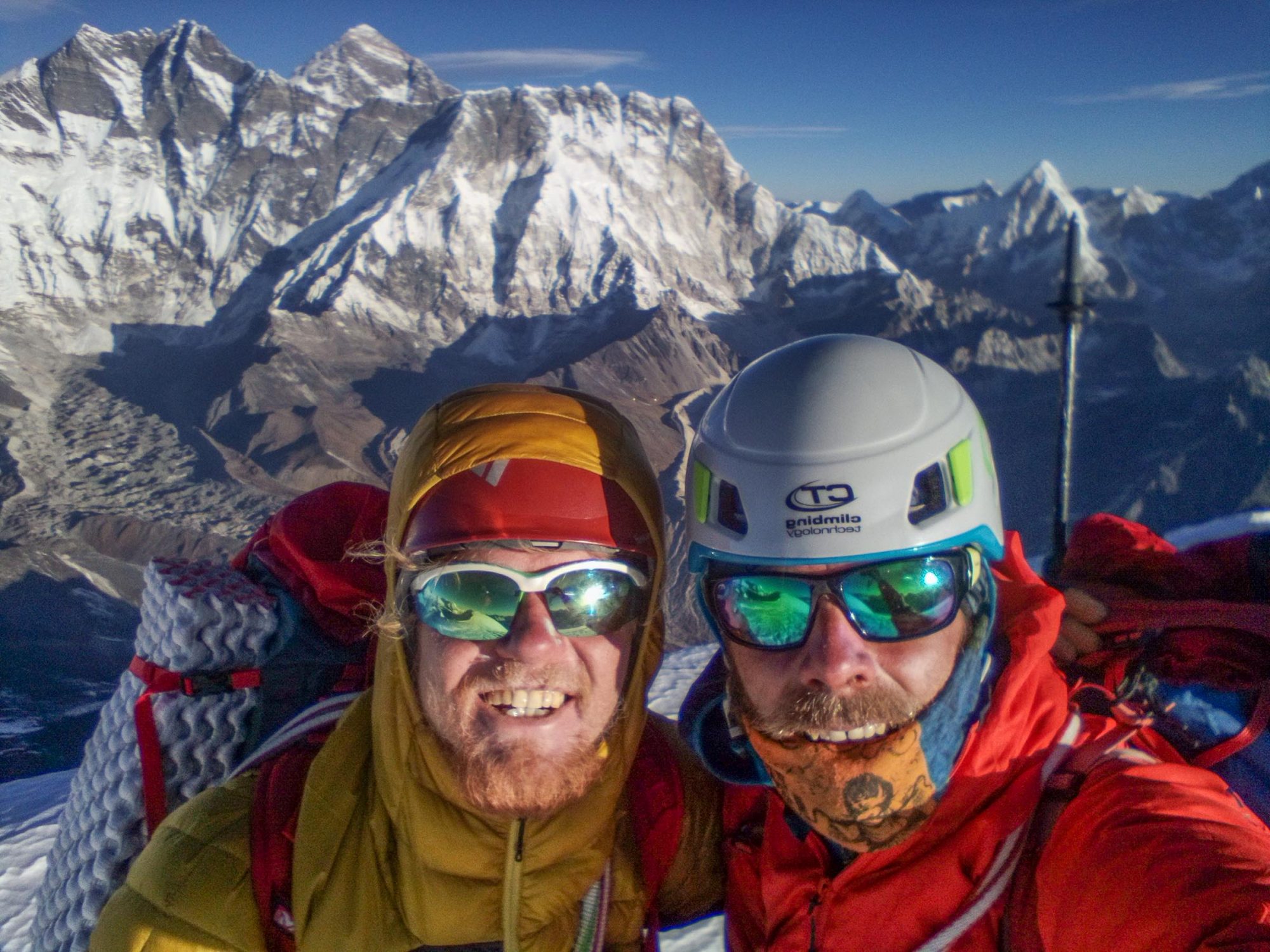
(photo: Z. Hak)
Simultaneously people often view Ama Dablam as a sacred mountain. How did you digest this?
It’s quite a frequented mountain nowadays. You’re not really under the impression that you’re climbing a sacred mountain. There are choppers flying about constantly carrying down someone from a party and alike. I mean you see the Christmas tree in base camp, and you feel like you’re in Chamonix. (“It feels more like the north face of the Eiger during its early days, when they were watching the climbers with binoculars from Kleine Scheidegg. They were isolated on the wall, but everyone was watching them” adds Hook). Even our second bivi was at the same altitude as camp 3 on the normal route. We even saw clients poking their heads out their tents and gawking at us. There really isn’t a feeling of isolation. Compared to the Alps though, nobody is really interested that someone’s on the north face of the Eiger. Here, we were the talk of the town, because the Sherpas don’t really climb this stuff. If there’s no fixed ropes, they can’t be bothered.
How did Hook enjoy climbing with you?
Right… I’m getting a beer. (Laughing) Hook: When I consider the fact that I pulled him out of a dustbin in Kathmandu, it was absolutely brilliant. Kuba’s just the kind of climber who suits me. You don’t have to explain anything to him, and he automatically does what you expect from him. Like if the rope starts to run out, he doesn’t yell, he just starts climbing. It was easy-going all the way up. Every pitch that falls on him, he climbs.
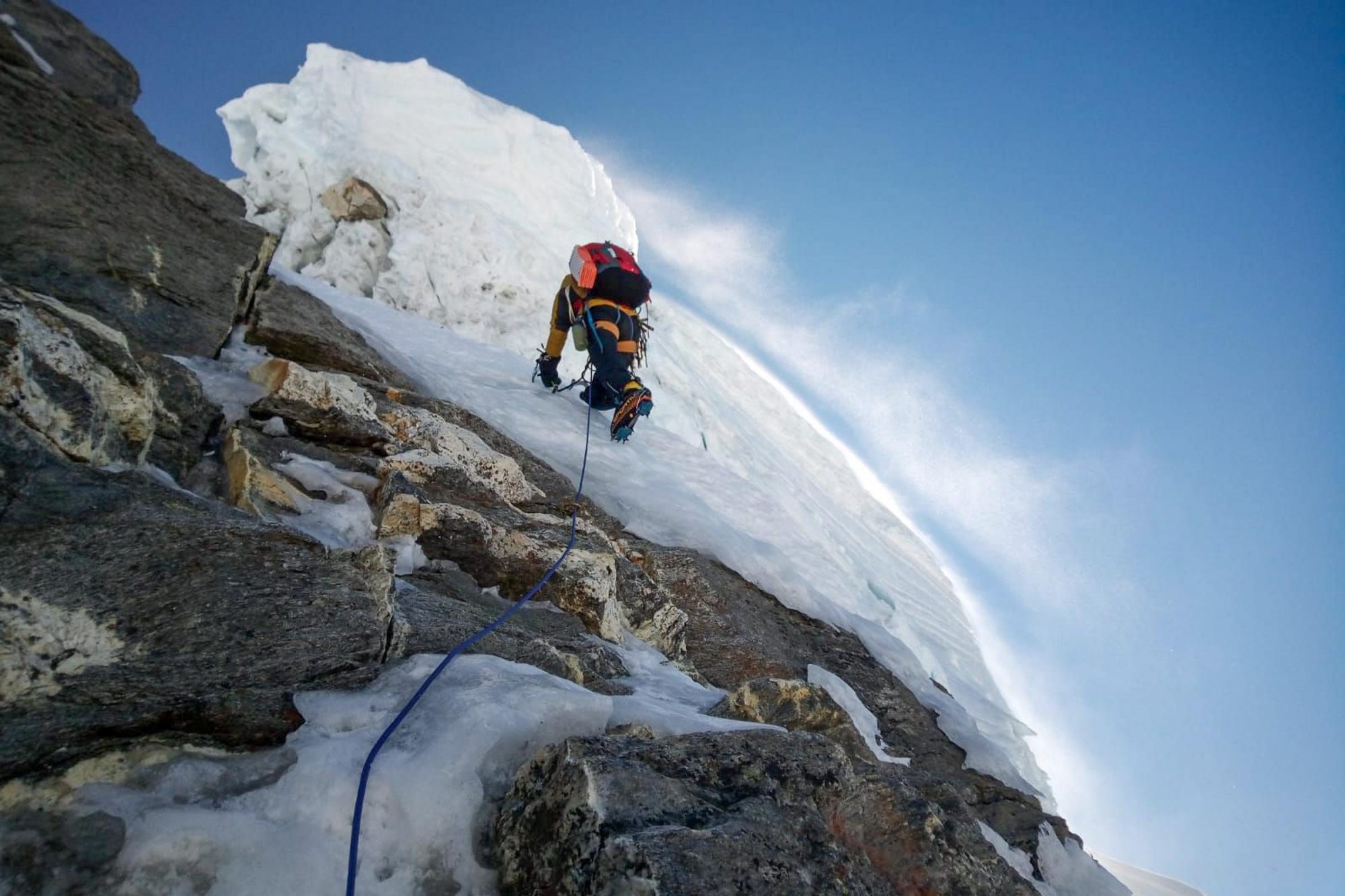
(photo: Z. Hak)
Had you met before?
Hook: No, we met at the airport before take-off. We had never climbed together before. At first I was thinking to myself: “Who is this moron? What’s he doing stumbling about in the Himalayas?”. While we were acclimatising on Lobuche, he just popped up after dark, climbed up and we didn’t see him after… then we met him again somewhere else… he was just stumbling about, but when David left, we started chatting about Adršpach and became closer. I then offered if he wanted to do Ama Dablam with me. I saw him descending off Lobuche, so I reckoned he was fast and technically proficient. It then became clear that he was going to be good. You can tell these kinds of things right away. (Laughing)
In hindsight what do you think of Míra Šmíd’s effort then?
Ratlík returns with his beer: on the nights in the bivis we were having a crack at Šmíd’s stories. We laughed when he wrote: “I don’t think I’m exaggerating; the surrounding terrain is steep, 85°-90°, rock climbing.” We said to ourselves: “Oh sure it is! It never goes beyong 70°!”. Then we belayed each other on every pitch, and it was proper climbing. We expected it to be much easier then Míra Šmíd’s description. We thought he was embellishing it a bit for his book, so it would look good: “Vertical terrain. Grade V.” Well, it was precisely like he said it was. He was just generally impressive. What he could do in a day! He spent one day less on the route than we did. He had it technically easier on the lower section, but it was still hard. And the descent I just straight up don’t understand. Nevertheless, after 30 years, our ascent was still a substantial achievement, which we appreciate. We got quite a lot of positive comments from around the world which we are happy about.
More from Sandsotnes? Support our small editorial staff

